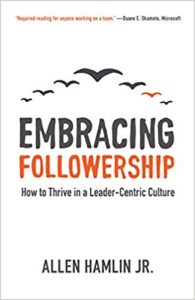 In Jim Collin’s classic book, Good to Great, he introduces readers to the idea of a Hedgehog Concept. Collins says the idea came from a famous essay by Isaiah Berlin called “The Hedgehog and the Fox.” It’s based on the ancient Greek parable: “The fox knows many things, but the hedgehog knows one big thing.” The fox uses multiple ideas and numerous strategies in its battles with the hedgehog. But, says Collins, the hedgehog always wins by using one simple, surefire approach – curling up into a ball. When the hedgehog employs this defensive position, it exposes his sharp spikes to deter attacks from predators. Despite the many and varied tactics the fox uses, the hedgehog always emerges victorious by using his one, focused strategy.
In Jim Collin’s classic book, Good to Great, he introduces readers to the idea of a Hedgehog Concept. Collins says the idea came from a famous essay by Isaiah Berlin called “The Hedgehog and the Fox.” It’s based on the ancient Greek parable: “The fox knows many things, but the hedgehog knows one big thing.” The fox uses multiple ideas and numerous strategies in its battles with the hedgehog. But, says Collins, the hedgehog always wins by using one simple, surefire approach – curling up into a ball. When the hedgehog employs this defensive position, it exposes his sharp spikes to deter attacks from predators. Despite the many and varied tactics the fox uses, the hedgehog always emerges victorious by using his one, focused strategy.
Collins goes on to say that the idea of a Hedgehog Concept has helped successful companies define who they are, focus their energies and become more successful. They do this by answering three critical questions. 1. What are you best at? 2. What are you most passionate about? 3. What drives your economic engine?
Developing a Hedgehog Concept for churches can be extremely valuable. As churches grow, they naturally drift towards complexity. So the need to define and embrace a Hedgehog Concept will help define vision and mission, give a framework around resource allocation and give clarity to critical decision making.
I was part of a church that used the Hedgehog Concept. The senior leaders asked the three questions. After much time, thought and prayer, their answers were incorporated into the culture of the church and helped the church in a major season of growth.
As church leaders who want to bring increased levels of organizational health to your churches, encourage your leaders to wrestle with these three questions. Continue reading

 Allen Hamlin Jr’s book Embracing Followership – How to Thrive in a Leader-Centric Culture is a fascinating look at the unique nature of followership, its relation to leadership, and the critical way it builds the kingdom and enhances the body of Christ. This work dives into the topics of influence and authority, formal and informal power structures, and is reminiscent of John Maxwell’s 5 Levels of Leadership, Mike Bonem & Roger Patterson’s Leading From The Second Chair, and Clay Scroggin’s How To Lead When You’re Not In Charge. However, Hamlin’s approach is unique in that it focuses specifically on the follower. Here are three areas that stood out to me.
Allen Hamlin Jr’s book Embracing Followership – How to Thrive in a Leader-Centric Culture is a fascinating look at the unique nature of followership, its relation to leadership, and the critical way it builds the kingdom and enhances the body of Christ. This work dives into the topics of influence and authority, formal and informal power structures, and is reminiscent of John Maxwell’s 5 Levels of Leadership, Mike Bonem & Roger Patterson’s Leading From The Second Chair, and Clay Scroggin’s How To Lead When You’re Not In Charge. However, Hamlin’s approach is unique in that it focuses specifically on the follower. Here are three areas that stood out to me.
 Typically, reasons are given. You’ll probably disagree with most of them. Other times the much more ambiguous “no longer a good fit” explanation is offered. That’s just confusing.
Typically, reasons are given. You’ll probably disagree with most of them. Other times the much more ambiguous “no longer a good fit” explanation is offered. That’s just confusing. Author Larry Osborne gives us a clue. In Sticky Leaders he says, “If something doesn’t take us toward our mission, it takes us away from our mission, even if it’s a great idea.” If we say yes to too many good ideas, we quickly lose focus. Too many options overwhelm people, divide attention, and dilute impact.
Author Larry Osborne gives us a clue. In Sticky Leaders he says, “If something doesn’t take us toward our mission, it takes us away from our mission, even if it’s a great idea.” If we say yes to too many good ideas, we quickly lose focus. Too many options overwhelm people, divide attention, and dilute impact. Some seek to teach complex concepts and be thoroughly understood. Others simply try hard to entertain their listeners. But the most effective communicators seek to influence their listeners to action. Transmitting information is not difficult. But communicating for life change takes a lot more work.
Some seek to teach complex concepts and be thoroughly understood. Others simply try hard to entertain their listeners. But the most effective communicators seek to influence their listeners to action. Transmitting information is not difficult. But communicating for life change takes a lot more work. It’s been said you can’t manage what you don’t measure. And while it seems natural to track results, many church leaders don’t measure effectiveness for fear of finding the answers. Cold, hard facts can reveal painful realities which force us to make difficult decisions. We can either courageously lead our churches through transition, or we can keep the status quo, thinking we’re making progress but actually having little impact.
It’s been said you can’t manage what you don’t measure. And while it seems natural to track results, many church leaders don’t measure effectiveness for fear of finding the answers. Cold, hard facts can reveal painful realities which force us to make difficult decisions. We can either courageously lead our churches through transition, or we can keep the status quo, thinking we’re making progress but actually having little impact.
 You can’t go anywhere without the wind
You can’t go anywhere without the wind